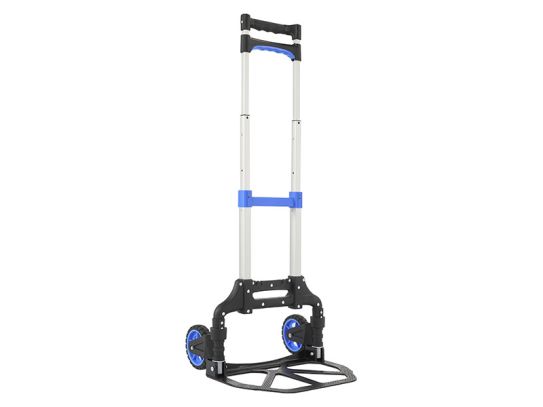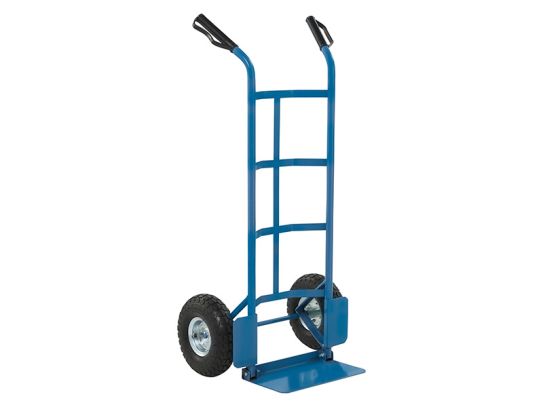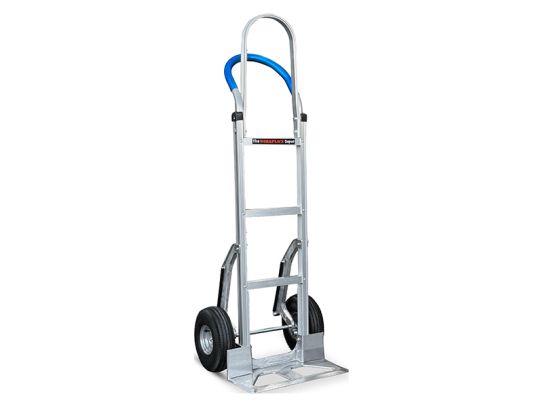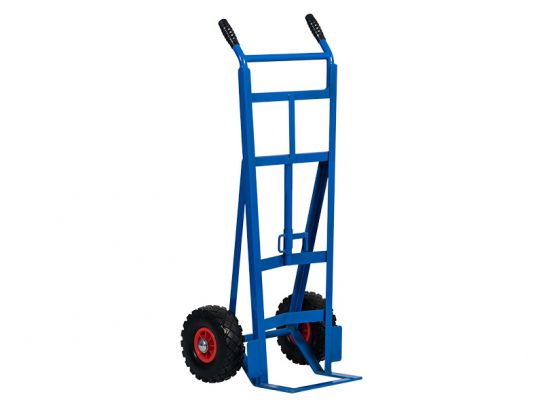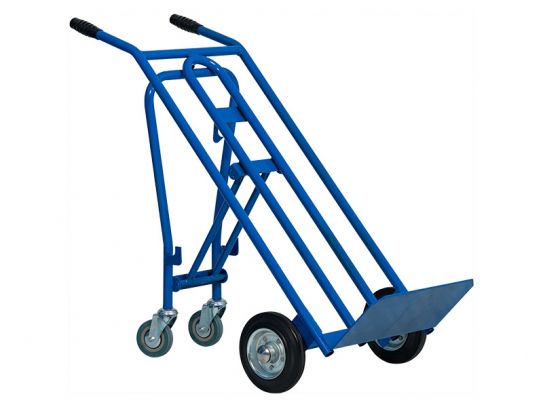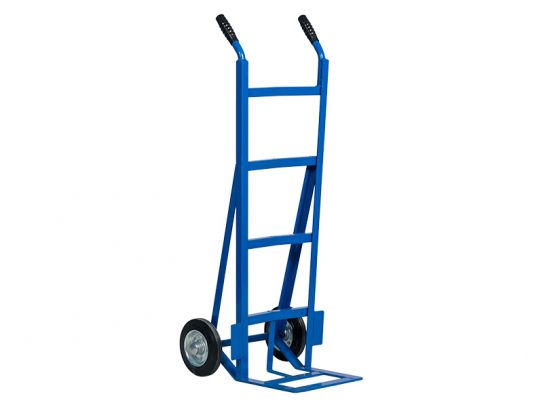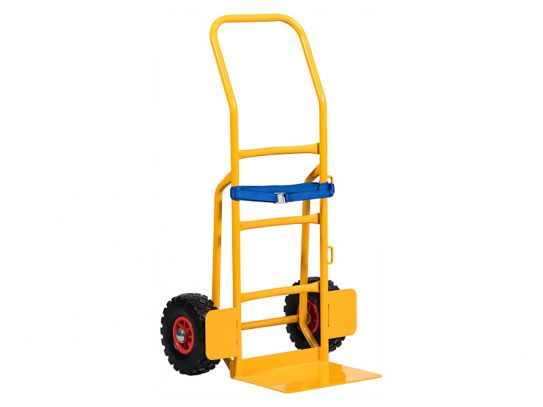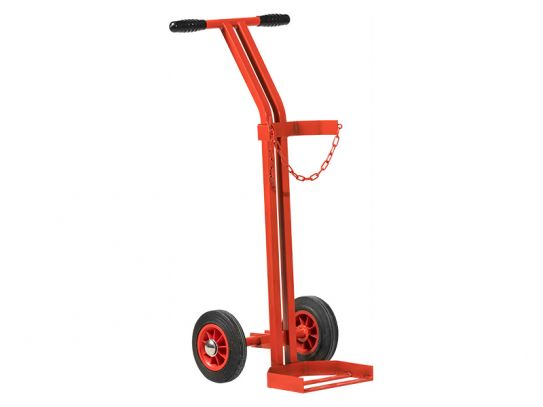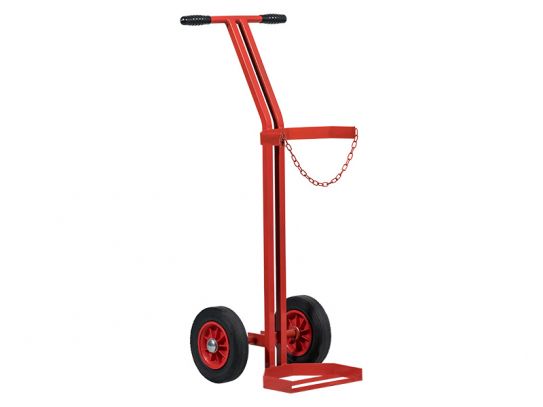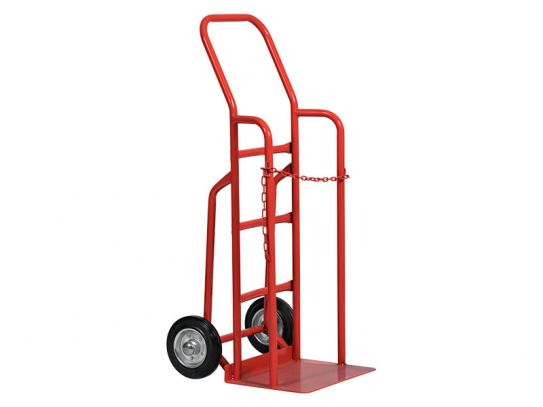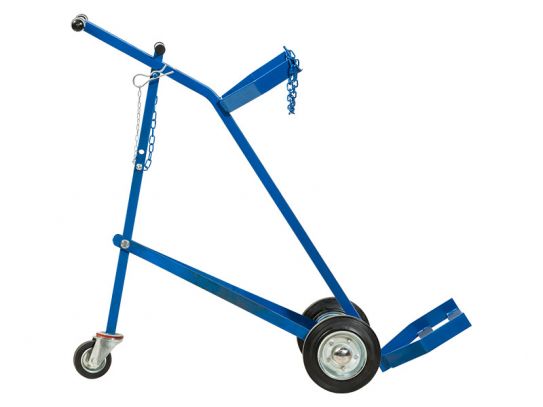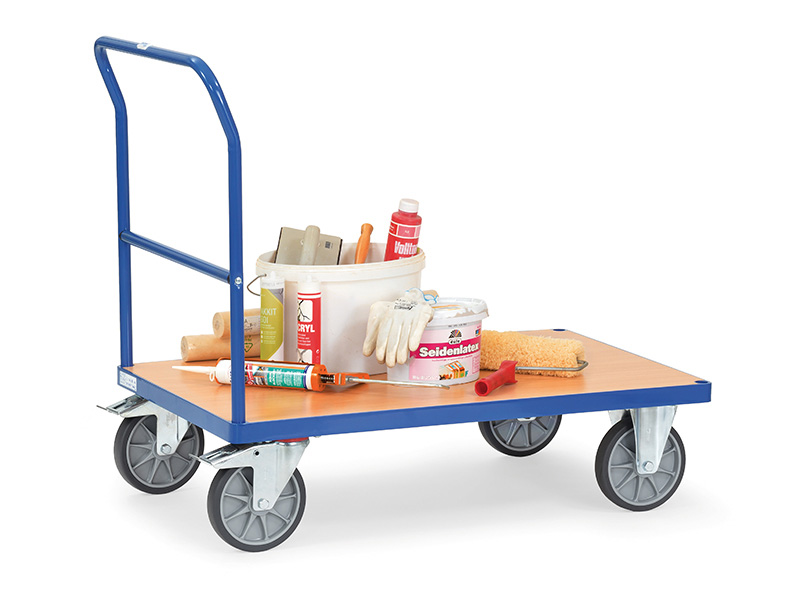Sack Trucks
Effortlessly Move Heavy Items with Our Sack Trucks
Are you tired of struggling to move heavy items from one place to another? Look no further! Our range of sack trucks is here to make your life easier. With a variety of sizes and styles to choose from, you'll find the perfect truck for your needs.
Our solid rubber wheels are durable and ready to tackle any terrain, while our pneumatic wheels provide a smooth ride on even the roughest surfaces. And with a range of weight capacities, you can be sure that we have a sack truck that can handle whatever you need to move.
What Is a Sack Truck?
Sack trucks are an essential tool for anyone who needs to transport heavy objects from one place to another. They are commonly used in warehouses, factories, and other settings where goods need to be moved quickly and efficiently. Sack trucks are designed to be tilted back and rolled, allowing the user to easily move heavy objects without straining their back or lifting with their arms. This makes them a convenient and effective solution for a wide range of tasks, from moving boxes and barrels to transporting furniture and appliances.
How Are Sack Trucks Typically Used?
Sack trucks, also known as hand trucks, are commonly used for moving heavy or bulky items from one location to another. They are often used in warehouses, factories, and other industrial environments, as well as in offices, stores, and other commercial settings. Sack trucks are designed to make it easier to transport heavy or awkward items, such as boxes, crates, barrels, and other types of cargo, by allowing the user to roll the load on the truck's wheels instead of carrying it by hand. This can help reduce the risk of injury and strain, and make it easier to move the items over long distances or on uneven surfaces. Sack trucks can also be used in residential settings, such as for moving furniture or appliances.
Are There Different Types of Sack Trucks?
There are several different types of sack trucks, each designed for specific uses and environments. Some common types of sack trucks include:
- Standard sack trucks: These are the most common type of hand truck, and are designed for general-purpose use. They typically have a horizontal platform or frame for supporting the load, and two sets of wheels for stability and ease of movement.
- Folding sack trucks: These trucks are similar to standard sack trucks, but have the added benefit of being able to fold down for easy storage and transport. This makes them a good choice for users who need to move the truck between different locations, or who have limited space for storing the truck.
- Convertible sack trucks: These trucks can be converted from a standard hand truck into a platform truck, which allows the user to easily move large, flat items such as boxes or sheets of plywood. This can be useful in a variety of settings, including warehouses, construction sites, and other environments where a variety of items need to be transported.
- Specialty sack trucks: There are also many specialised sack trucks designed for specific uses and environments. For example, some trucks are designed specifically for moving drums, while others are designed for use in narrow aisles or tight spaces. There are also trucks designed for use in cold environments, or for moving heavy or hazardous materials.
What Are the Key Features to Look for When Buying a Sack Truck?
When choosing a sack truck, there are several key features to consider in order to find the best truck for your needs. Some important factors to consider include:
- Load capacity: The load capacity of a sack truck refers to the maximum weight that the truck can safely support. It's important to choose a truck with a load capacity that is appropriate for the items you plan to transport. If you choose a truck with too low of a load capacity, it may not be able to support the weight of the items you need to move, which can be dangerous.
- Wheel type and size: The type and size of the wheels on a sack truck can affect its performance and suitability for different environments. For example, larger wheels may be better for moving over rough or uneven surfaces, while smaller wheels may be better for use in tight spaces. The type of wheels can also affect the truck's performance, with solid wheels being better for moving over smooth surfaces, and pneumatic wheels being better for rough or uneven terrain.
- Handle type and height: The handle on a sack truck can affect the user's comfort and control when moving the truck. Some handles are adjustable, which can be useful for users of different heights. It's also important to choose a handle that is comfortable to grip, and that allows the user to easily control the truck.
- Foldability: If you need to store or transport your sack truck, it's important to choose a truck that can be easily folded down for storage. This can save space and make it easier to move the truck between locations.
- Special features: Some sack trucks may have additional features that can be useful for specific tasks or environments. For example, some trucks have retractable legs that allow the user to use the truck as a platform for supporting the load, while others have built-in straps or ratchets for securing the load. Choosing a truck with the right special features can help make your job easier and more efficient.
How Do Different Types of Wheels Affect the Performance of a Sack Truck?
The type of wheels on a sack truck can affect its performance and suitability for different environments.
- Solid rubber wheels are made of a solid, uniform material, such as rubber or polyurethane, and are typically more durable and resistant to wear and tear than other types of wheels. They are also less likely to puncture or deflate, which can make them a good choice for moving heavy or sharp items. However, solid rubber wheels may not provide as much cushioning or traction as other types of wheels, and may be less effective on rough or uneven surfaces.
- Pneumatic wheels, on the other hand, are made of a flexible, air-filled inner tube, surrounded by a rubber or polyurethane outer tread. Pneumatic wheels provide more cushioning and traction than solid rubber wheels, and can absorb more of the impact and shock from moving over rough or uneven surfaces. However, pneumatic wheels are more susceptible to punctures and deflation, and may require more maintenance and care to keep them in good working condition.
Can I Use a Sack Truck on Stairs?
In general, it is not recommended to use a sack truck on stairs, as this can be dangerous and can cause damage to the truck or the load. Sack trucks are designed for moving items on flat, level surfaces, and the wheels may not be able to grip or roll properly on stairs. Additionally, the weight of the load on the truck can make it difficult to control the movement of the truck on stairs, which can increase the risk of accidents or injuries. If you need to move items up or down stairs, it may be safer to use a different type of tool, such as a stair climber or a dolly.
How Do I Maintain My Sack Truck?
To keep your sack truck in good working condition, it's important to regularly check and maintain the truck's wheels, handle, and other parts. This may include checking the tire pressure, lubricating the wheels, and tightening any loose bolts or screws. It's also important to clean the truck regularly to remove dirt and debris, and to store the truck in a dry, protected location when not in use. To perform maintenance on your sack truck, follow these steps:
- Check the wheels: Regularly inspect the wheels on your sack truck for signs of wear or damage, such as cracks, flats, or loose bolts. If the wheels are damaged or worn, replace them with new wheels to ensure that the truck can roll smoothly and safely.
- Lubricate the wheels: Lubricating the wheels on your sack truck can help reduce friction and wear, and can make the truck easier to move. Use a high-quality wheel bearing grease or lubricant, and apply a thin layer to the bearings and other moving parts of the wheels.
- Tighten loose bolts: Over time, the bolts and screws on your sack truck may become loose, which can affect the truck's performance and safety. Regularly check all of the bolts and screws on the truck, and tighten any that are loose using a wrench or screwdriver.
- Clean the truck: To keep your sack truck in good condition, it's important to clean it regularly to remove dirt, debris, and other contaminants. Use a soft cloth or brush to gently scrub the truck's frame and wheels, and use a mild soap or cleaning solution if needed. Avoid using harsh chemicals or abrasive cleaners, as these can damage the truck's finish or components.
- Store the truck properly: When not in use, store your sack truck in a dry, protected location to prevent damage from moisture, dust, or other environmental factors. If possible, store the truck indoors, and avoid exposing it to extreme temperatures or direct sunlight. If you need to store the truck outdoors, cover it with a tarp or other protective covering to keep it clean and dry.
What Safety Precautions Should I Take When Using a Sack Truck?
When using a sack truck, it's important to follow basic safety precautions to avoid injuries and accidents. This may include wearing appropriate protective gear, such as gloves and safety glasses, and making sure the load is balanced and securely attached to the truck before moving it. It's also important to be aware of your surroundings and avoid moving the truck too quickly or carelessly, to prevent collisions or other accidents. Some specific safety precautions to take when using a sack truck include:
- Wear protective gear: Always wear gloves when using a sack truck, to protect your hands from blisters, cuts, or other injuries. If you are moving heavy or sharp items, you may also want to wear safety glasses, a hard hat, or other protective gear to protect your eyes and head.
- Check the load: Before moving a load with a sack truck, carefully inspect the items to make sure they are evenly balanced and secure on the truck. Avoid overloading the truck, and make sure the load is not protruding beyond the edges of the platform. This will help prevent the truck from tipping over or losing control.
- Use the handle: Always use the handle of the sack truck to guide and control the movement of the truck. Avoid pushing or pulling the truck from the side, as this can cause the truck to tip over or lose control. Keep a firm grip on the handle, and use both hands to control the truck.
- Be aware of your surroundings: When moving a sack truck, always be aware of your surroundings and avoid collisions with other people, objects, or obstacles. Keep a safe distance from other workers, and be careful not to run over anyone's feet or toes. Watch out for obstacles in your path, such as stairs, curbs, or uneven surfaces, and adjust your speed and direction accordingly.
- Follow proper lifting techniques: When lifting items onto or off of a sack truck, use proper lifting techniques to avoid injuries. Bend at the knees, not the waist, and keep the load close to your body. Avoid twisting or turning your body while lifting, and always use your legs to do the lifting, not your back. If the load is too heavy or awkward to lift safely, ask for help or use a different tool to move it.
Are There Any UK or European Industry Standards or Regulations That Apply to Sack Trucks?
Yes, there are several industry standards and regulations that apply to sack trucks in the UK and Europe. These standards and regulations are designed to ensure the safety and performance of sack trucks, and to provide guidance on their use and maintenance. Some examples of UK and European standards and regulations that apply to sack trucks include:
- BS EN 1757-3: This is the European standard for hand-operated trucks, which includes requirements for the design, construction, testing, and performance of sack trucks. The standard covers a range of issues, including load capacity, stability, braking, and marking, and provides guidance on how to use and maintain sack trucks safely and effectively.
- BS EN 12182: This is the European standard for hand-held trolleys and trucks, which includes requirements for the design, construction, testing, and performance of hand-held trolleys and trucks, including sack trucks. The standard covers a range of issues, including load capacity, stability, braking, and marking, and provides guidance on how to use and maintain hand-held trolleys and trucks safely and effectively.
- The Health and Safety at Work etc. Act 1974: This is a UK law that sets out the general duties of employers and employees to ensure the health and safety of workers in the workplace. The Act applies to all types of workplaces, including factories, warehouses, and offices, and requires employers to provide a safe working environment and to take steps to prevent accidents and injuries.
- The Personal Protective Equipment at Work Regulations 1992: This is a UK law that sets out the requirements for the use of personal protective equipment (PPE) in the workplace. The Regulations apply to all types of PPE, including gloves, safety glasses, and hard hats, and require employers to provide appropriate PPE to workers who need it, and to ensure that the PPE is used correctly and maintained in good condition.
